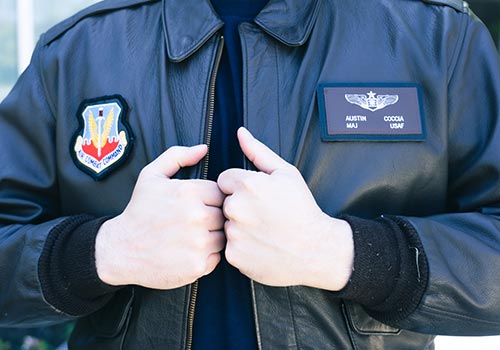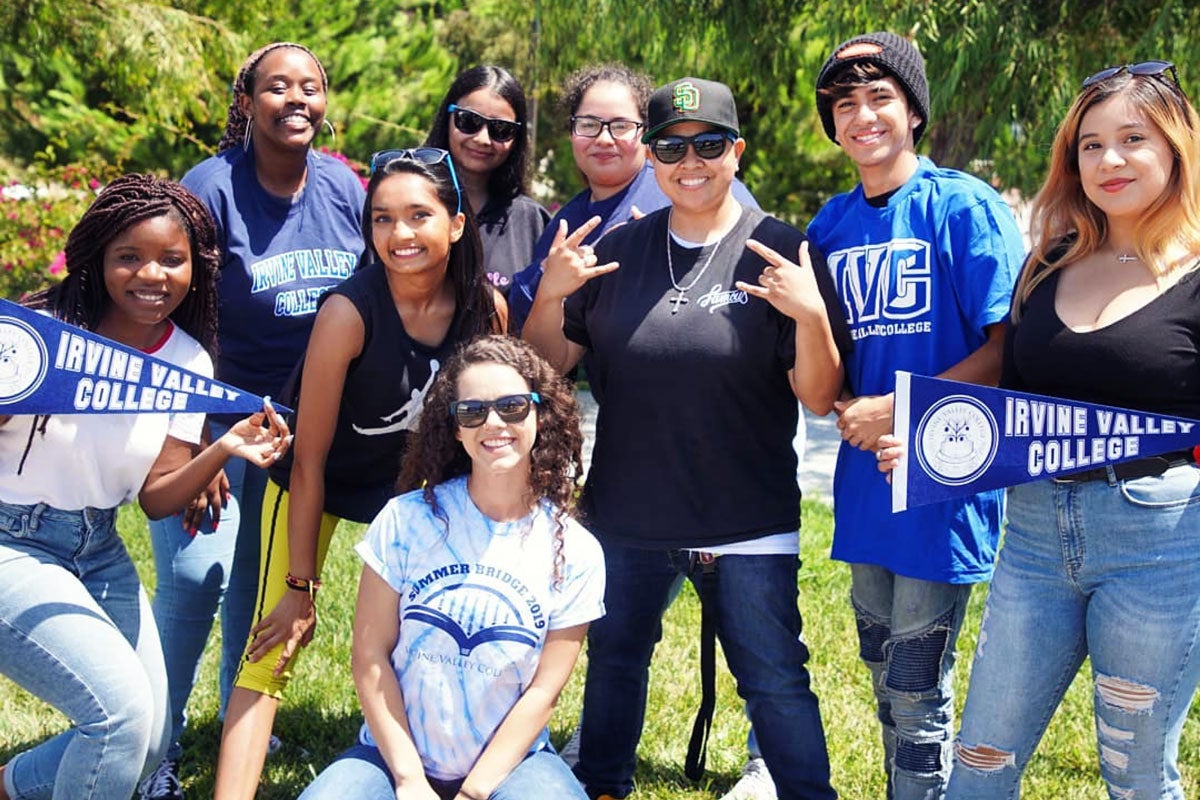My First Drop
Austin Coccia, United States Air Force
 I was a Weapon Systems Officer (WSO) flying in the back seat of the F-15E; a tandem fighter-bomber jet in the Air Force. I was “doing the J.O.B.” as we said, supporting ground operations in various countries throughout the world. This night I was providing armed overwatch for multiple Marine squads who had surrounded enemy firing on them from within a small town. I was aching to drop my first bomb in combat, and there was a general feeling in the squadron that tonight was going to be the night.
I was a Weapon Systems Officer (WSO) flying in the back seat of the F-15E; a tandem fighter-bomber jet in the Air Force. I was “doing the J.O.B.” as we said, supporting ground operations in various countries throughout the world. This night I was providing armed overwatch for multiple Marine squads who had surrounded enemy firing on them from within a small town. I was aching to drop my first bomb in combat, and there was a general feeling in the squadron that tonight was going to be the night.
This was my first deployment, and I was eager. Due to factors well outside my control, I had been in the training pipeline for nearly four years when the standard was two and a half. It was late December 2009 when the squadron deployed, and we spent the first few weeks not flying due to the poor weather conditions. Instead, us young guys listened to our seniors tell stories of how often they’d been slinging bombs in their previous deployments. Eventually a few of the first-timers dropped, and the rest of us reviewed their tapes as closely as any football coach watches past games, analyzing every aspect of decision-making and execution. We kept track of who had and had not dropped; it was a rite of passage, not unlike losing one’s virginity.
The night it happened was in February 2010. My flight received a very non-standard briefing. We were going to relieve another flight that was running out of fuel. Besides that, we didn’t get a lot of information prior to hopping in the jets. That wasn’t uncommon; most of our missions were dynamically assigned while in-flight to wherever we had a Troops-in-Combat (TIC) situation. Even for a fighter jet, it was a long distance from where we were stationed, so we had about a two-hour flight to get to the mission area. I was in radio-communications with the flight I was relieving for about 30 minutes prior to arriving, and the situation had naturally changed.
 The fighting on the ground had deescalated. The Marine squads had cordoned the enemy in a building and hadn't been under fire for some time. The Marines were moving up to assault and secure the building. Blowing up a building could only be done under dire circumstances, so the chances of dropping that night seemed almost zero. Disappointing. But not surprising. Plus it’s pretty easy to be detached from the situation when you’re 20,000 ft overhead. Still, I had a job to do and went through all the standard procedures. I talked with the Joint Terminal Attack Controller (JTAC), built my Situational Awareness, and came up with contingency plans should a firefight break out. I then started performing surveillance with my advanced targeting pod looking for anything out of the ordinary.
The fighting on the ground had deescalated. The Marine squads had cordoned the enemy in a building and hadn't been under fire for some time. The Marines were moving up to assault and secure the building. Blowing up a building could only be done under dire circumstances, so the chances of dropping that night seemed almost zero. Disappointing. But not surprising. Plus it’s pretty easy to be detached from the situation when you’re 20,000 ft overhead. Still, I had a job to do and went through all the standard procedures. I talked with the Joint Terminal Attack Controller (JTAC), built my Situational Awareness, and came up with contingency plans should a firefight break out. I then started performing surveillance with my advanced targeting pod looking for anything out of the ordinary.
It was about 2 AM local time, so there wasn’t any foot traffic in the town. It was also a very dark night with almost no sky or ground illumination. Still, there was a small group of onlookers from one of the walled compounds not far from where the Marines were performing their cordon. I advised the JTAC of this, and two marines posted about 30 yards away to keep an eye on them. I then had my wingman continue to scan the compound while I watched the Marines perform their assault, reminding myself that the guys on the ground were having a much more harrowing experience.
The building’s windows lit up. Brief infrared (IR) flashes, probably from grenades. Before the Marines could continue their assault, the onlookers from the compound opened fire on the two sentries watching them. In the pod's display, I could see one of them holding a light machine gun, a PKM we guessed, spraying bullets like Johnny Rambo. The projectiles in IR were looking like a stream from a super soaker, yet they moved with greater velocity, ricocheting violently. One of the sentries was in the center of it; he'd been hit multiple times and was falling down, but there was no way to tell how badly he’d been hurt. (I later heard he’d been airlifted to intensive care in Bagram but was expected to live.) Everything happened in the span of two seconds, but even though we had prepared for exactly this kind of scenario, I had the distinct thought of “Oh, this is really happening now” as soon as I felt the G onset from turning the jet. We rolled in with a Show of Force; a maneuver where we flew low, close, and fast with full afterburner: designed to be a very low-collateral way of shocking enemy troops and forcing them to disengage and grant our own troops some breathing room. It worked. The onlookers, who we quickly deduced were the enemy the Marines were looking for in the first place, fled from the compound into the streets of the town.
My pilot, callsign PLAGUE, was an experienced instructor but overly excitable. He took control, quickly setting up a strafing pattern, pushing the JTAC to give clearance to open fire. The JTAC was struggling to keep up with the changing situation, but quickly recovered and correctly called off our strafing run since spraying bullets into a sleeping town wasn’t going to win the hearts and minds of the locals. Luckily the enemy kept fleeing into the fields outside of town where we had no risk of collateral damage. We readied for another attack run, this time with a laser-guided bomb (LGB). I was figuratively behind the jet at this point; PLAGUE was driving the tempo of the fight and was yelling at me to swap weapon programs while simultaneously hitting the swap-program button himself. We were fumbling over the programs and the comms, and consequently we weren’t ready to drop our bomb and had to abort the run--an embarrassing thing to do in combat. In the back of my mind, I was thinking about how everything was being recorded and would be analyzed by the entire squadron. I never got embarrassed by mistakes, and rarely got so flustered in the moment that I couldn’t recover quickly, but at the same time I hated that I was one of the weaker WSOs in the squadron. I wanted my peers' respect.
Our wingman was in position and dropped instead. I watched his bomb impact a few feet away from the group but it failed to fuse, plowing through the soft earth and breaching some yards away like some kind of wave-hopping dolphin. It showered the enemy in dirt, but otherwise they were unharmed. We came in for our second attack, this time with our program set up correctly, only the bomb hung, meaning it wouldn’t come off the jet. PLAGUE had gone quiet with rage at this point, but I was good at compartmentalizing. I reasserted control over the formation. The enemy had split into lead and trail elements and were running through the deep irrigation ditches for cover: a mistake as it made them predictable and physically close together. My wingman went in for his second attack. The bomb exploded but had fallen short, hitting the bank of the ditch and only stunning the lead element instead of terminating them. The trail element caught up to them, reuniting the group as they tried to help their stunned comrades. Bunched up and stationary, they made an easy target. Learning from my wingman’s mistake I aimed for the far bank of the ditch, allowing my bomb to fall squarely inside of it. The compounded blast effects eliminated seven of the ten immediately. Two others were seriously wounded. The last appeared uninjured, climbing out of the ditch and running for his life across the open fields in the night. We had used all our LGBs, and only had GPS bombs remaining. Those aren’t great for hitting moving targets, so instead we started strafing. The chance for success was slim. Because of the low illumination, and the fact that our gun is built to hit airplanes in a dogfight instead of people on the ground, our procedures had us err greatly on the side of safety causing us to open fire more than a mile away from our relatively small and agile target.
From the pod, I could see the bullets slow and then tumble in the air becoming completely ineffective. Nevertheless, they rained down on the insurgent, compelling him to keep running. We took turns, strafing for minutes and exhausting our ammo. Clearly tired, the insurgent attempted shelter under a small leafless tree and collapsed on his back. Since he stopped moving, we could risk dropping a GPS bomb which took about two and a half minutes from targeting to impact. I’ve heard that when you hear a bomb on the ground it doesn’t make that whistling sound like you see in old WWII movies, but rather you hear the loud clacking from the fins as they adjust the flight path of the bomb. I don’t know if the insurgent heard the bomb or our jet getting close, but he jumped to his feet and started running. It was too late. He took about two steps before the bomb exploded thirty feet overhead, looking like a miniature nuclear explosion in the IR pod, complete with the mushroom cloud.
I didn’t realize it at the time, but I was laughing hysterically. It freaked out PLAGUE, and I got a little shit for it back at the squadron. I had to be shown the tape to believe it. People thought I was a little crazy because of it, and maybe I am, but the truth was I was laughing at the proof of the old adage I’d just witnessed: “You can run, but you’ll only die tired.” Regardless, I had dropped bombs in combat, done the J.O.B., protected the guys on the ground, self-actualized, and killed. I was ecstatic the next day in the squadron, and I wore the experience as a badge of pride for years.
As I look back on it now, I don’t have any remorse for removing those enemy, but I do question the necessity of it. After any sort of attacks like these, the ground troops go around and mark all the impacts and photograph the bodies. I’d been told that the enemy would often visit these sites after the fact and lay down remains of women and children to use as propaganda. It was just one part of the greater objective of “Winning the Hearts and Minds of the local people.” Did it though? On the macro level did our service there protect American lives beyond the other military members on the ground? Did we make that country a better place? The evidence in favor of that seems pretty slim, admittedly putting a damper on the memory of it all.

More Stories




















